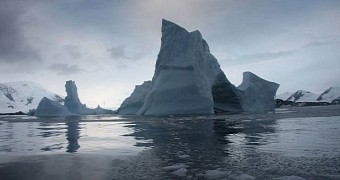An ice shelf in Antarctica that's been around for millennia will very soon break apart and vanish off the face of the planet, NASA researchers write in a new report.
The massive block of ice, known to scientists as the Larsen B Ice Shelf, is estimated to have formed about 11,000 to 12,000 years back.
Judging by how fast bits and pieces of it are now sailing into the nearby waters as icebergs, specialists estimate the shelf will disappear by the time this decade is over.
As detailed in the NASA video below, a large portion of the ice shelf collapsed in 2012. What remained of it is growing weaker and weaker.
“This ice shelf has existed for at least 11,000 years, and soon it will be gone,” scientist Ala Khazendar of the agency's Jet Propulsion Laboratory said in an interview.
The ice shelf's tributary glaciers are also changing
This ice shelf that researchers say will very soon disappear sits on the coast of the Antarctica Peninsula. These days, it covers an area of about 625 square miles (1,600 kilometers) and reaches a height of 1,640 feet (500 meters) at its thickest point.
NASA researchers say that, according to data at hand, its main tributary glaciers, i.e. Leppard, Flask and Starbuck, are too going through some changes. Thus, Leppard and Flask appear to have lost about 65 to 72 feet (20 to 22 meters) in thicknesses and to have picked up speed.
Since the Larsen B Ice Shelf is basically a bumper holding these glaciers in place, scientists worry that, when it vanishes, a whole lot of ice will reach nearby waters at an accelerated pace.
This spells bad news for global sea levels, coastlines
In their report, NASA researchers warn that having the Larsen B Ice Shelf in Antarctica break apart and fall into adjacent waters in the form of icebergs will surely contribute to sea level rise.
When the ice shelf it gone and the glaciers behind it follow it into the ocean, global sea levels are bound to increase even further. In turn, this phenomenon will reshape coastlines across the globe and transform aquatic habitats.
“Although it’s fascinating scientifically to have a front-row seat to watch the ice shelf becoming unstable and breaking up, it’s bad news for our planet,” said Ala Khazendar.

 14 DAY TRIAL //
14 DAY TRIAL // 